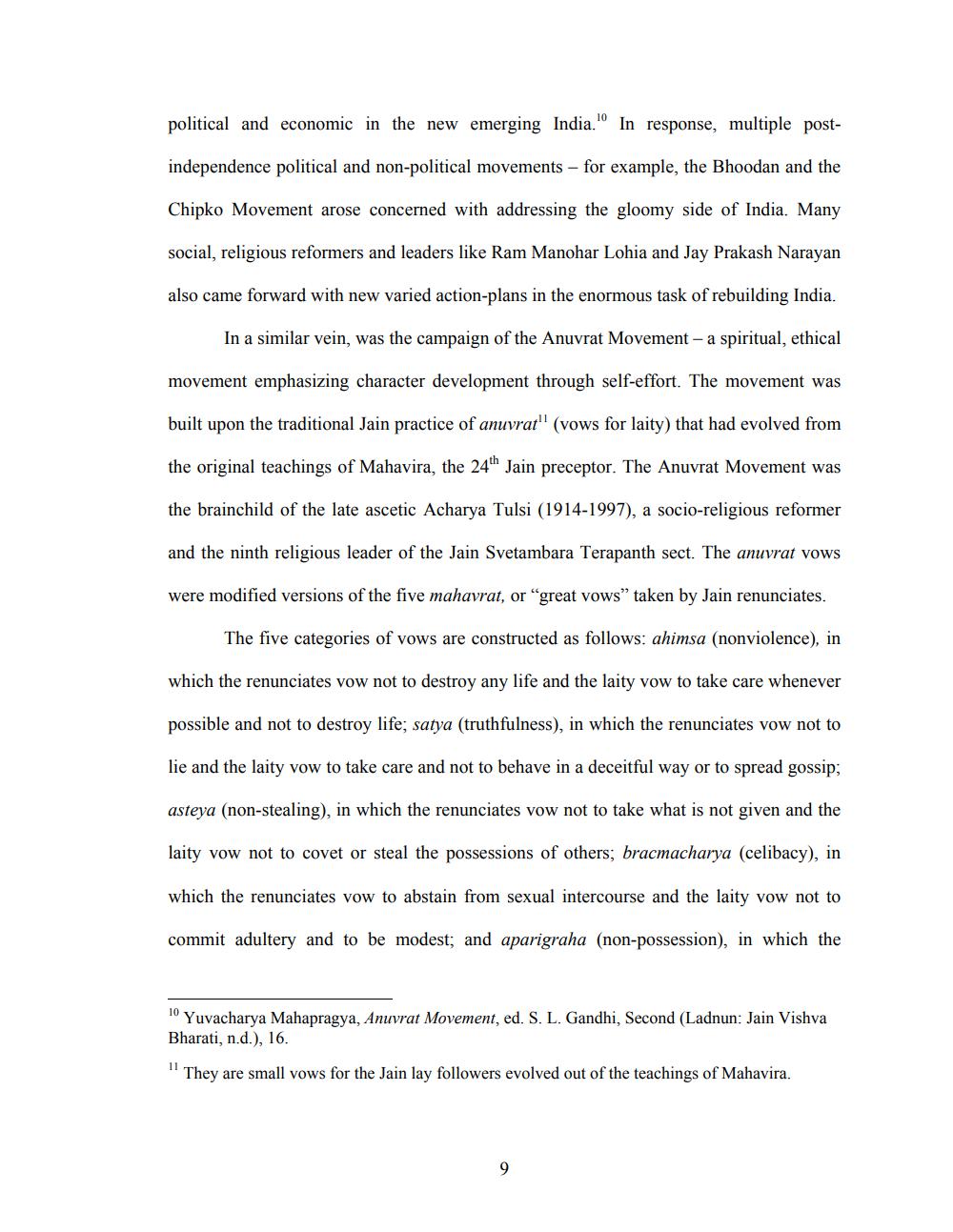________________
political and economic in the new emerging India.
In response, multiple post
independence political and non-political movements - for example, the Bhoodan and the
Chipko Movement arose concerned with addressing the gloomy side of India. Many
social, religious reformers and leaders like Ram Manohar Lohia and Jay Prakash Narayan
also came forward with new varied action-plans in the enormous task of rebuilding India.
In a similar vein, was the campaign of the Anuvrat Movement - a spiritual, ethical
movement emphasizing character development through self-effort. The movement was
built upon the traditional Jain practice of anuvrat" (vows for laity) that had evolved from
the original teachings of Mahavira, the 24th Jain preceptor. The Anuvrat Movement was
the brainchild of the late ascetic Acharya Tulsi (1914-1997), a socio-religious reformer
and the ninth religious leader of the Jain Svetambara Terapanth sect. The anuvrat vows
were modified versions of the five mahavrat, or "great vows” taken by Jain renunciates.
The five categories of vows are constructed as follows: ahimsa (nonviolence), in
which the renunciates vow not to destroy any life and the laity vow to take care whenever
possible and not to destroy life; satya (truthfulness), in which the renunciates vow not to
lie and the laity vow to take care and not to behave in a deceitful way or to spread gossip;
asteya (non-stealing), in which the renunciates vow not to take what is not given and the
laity vow not to covet or steal the possessions of others; bracmacharya (celibacy), in
which the renunciates vow to abstain from sexual intercourse and the laity vow not to
commit adultery and to be modest; and aparigraha (non-possession), in which the
10 Yuvacharya Mahapragya, Anuvrat Movement, ed. S. L. Gandhi, Second (Ladnun: Jain Vishva Bharati, n.d.), 16.
"They are small vows for the Jain lay followers evolved out of the teachings of Mahavira.




